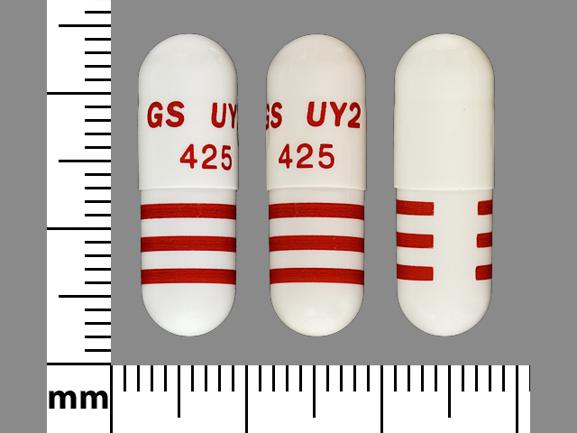Rythmol SR and Alcohol/Food Interactions
There is 1 alcohol/food/lifestyle interaction with Rythmol SR (propafenone).
Propafenone Food/Lifestyle
Moderate Food Interaction
GENERALLY AVOID: Grapefruit juice may increase the plasma concentrations of propafenone. The proposed mechanism is inhibition of CYP450 3A4-mediated first-pass metabolism in the gut wall by certain compounds present in grapefruit. Inhibition of hepatic CYP450 3A4 may also contribute. In over 90% of patients, propafenone is rapidly and extensively converted to 2 active metabolites: 5-hydroxypropafenone via CYP450 2D6 and N-depropylpropafenone (norpropafenone) via CYP450 3A4 and 1A2. In less than 10% of patients (approximately 6% of Caucasians in the U.S. population), however, metabolism of propafenone is slower because the 5-hydroxy metabolite is not formed, or minimally formed, due to a genetic deficiency in CYP450 2D6. In these poor metabolizers of CYP450 2D6, clearance of propafenone via the CYP450 3A4 and 1A2 metabolic pathways becomes more important, and inhibition of these pathways may substantially increase systemic exposure to propafenone. Likewise, patients taking concomitant inhibitors of CYP450 2D6 and 3A4 may experience similar pharmacokinetic effects. In general, the effect of grapefruit juice is concentration-, dose- and preparation-dependent, and can vary widely among brands. Certain preparations of grapefruit juice (e.g., high dose, double strength) have sometimes demonstrated potent inhibition of CYP450 3A4, while other preparations (e.g., low dose, single strength) have typically demonstrated moderate inhibition. Increased systemic exposure to propafenone may result in proarrhythmic events and exaggerated beta-adrenergic blocking activity.
MANAGEMENT: It may be advisable for patients to avoid the consumption of grapefruit, grapefruit juice, or supplements that contain grapefruit during treatment with propafenone.
References (4)
- Botsch S, Gautier JC, Beaune P, Eichelbaum M, Kroemer HK (1993) "Identification and characterization of the cytochrome P450 enzymes involved in N-dealkylation of propafenone: molecular base for interaction potential and variable disposition of active metabolites." Mol Pharmacol, 43, p. 120-6
- (2011) "Product Information. Rythmol SR (propafenone)." GlaxoSmithKline
- (2023) "Product Information. Apo-Propafenone (propafenone)." Apotex Incorporated
- (2022) "Product Information. Propafenone (propafenone)." Accord-UK Ltd
Switch to consumer interaction data
Rythmol SR drug interactions
There are 428 drug interactions with Rythmol SR (propafenone).
Rythmol SR disease interactions
There are 7 disease interactions with Rythmol SR (propafenone) which include:
- bronchospastic disorder
- cardiac dysfunction
- AV node dysfunction
- electrolyte imbalance
- (+) ANA titer
- liver disease
- renal dysfunction
More about Rythmol SR (propafenone)
- Rythmol SR consumer information
- Check interactions
- Compare alternatives
- Reviews (17)
- Drug images
- Side effects
- Dosage information
- During pregnancy
- Drug class: group I antiarrhythmics
- Breastfeeding
Related treatment guides
Drug Interaction Classification
| Highly clinically significant. Avoid combinations; the risk of the interaction outweighs the benefit. | |
| Moderately clinically significant. Usually avoid combinations; use it only under special circumstances. | |
| Minimally clinically significant. Minimize risk; assess risk and consider an alternative drug, take steps to circumvent the interaction risk and/or institute a monitoring plan. | |
| No interaction information available. |
See also:
Further information
Always consult your healthcare provider to ensure the information displayed on this page applies to your personal circumstances.


